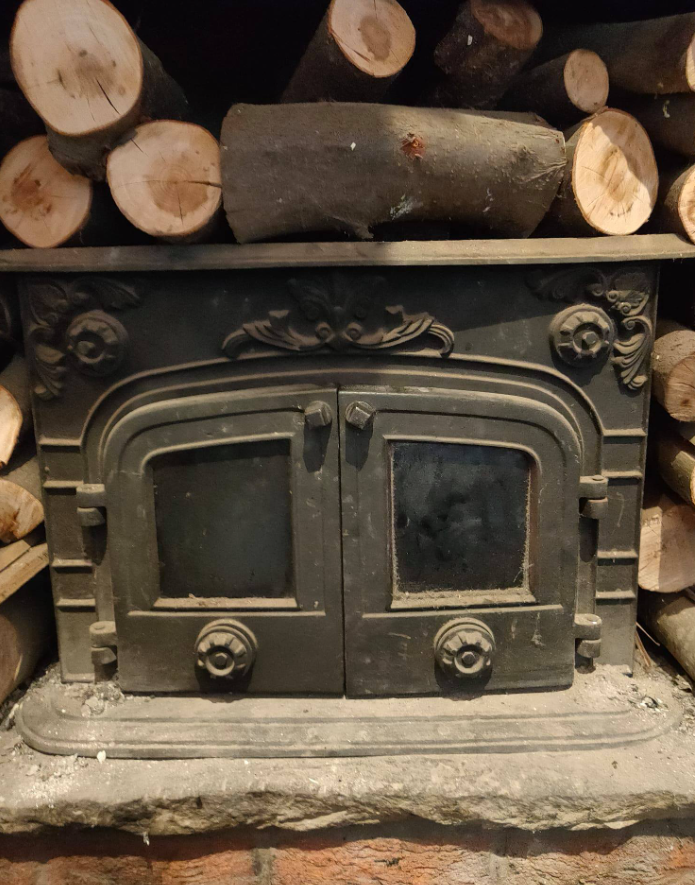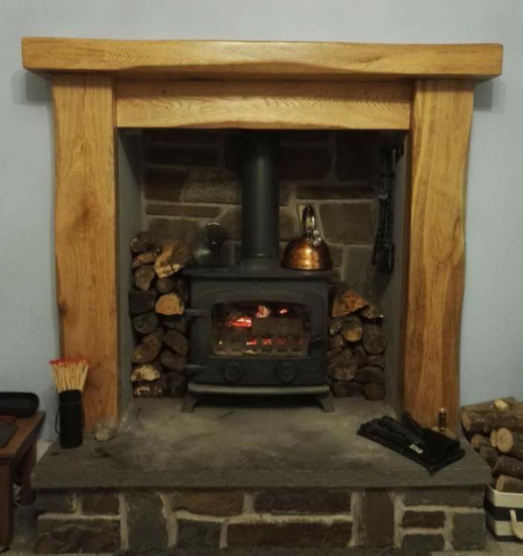Keeping Flames at Bay: The Importance of Storing Logs at a Safe Distance from Your Stove: Convenience tends to entice people to make unsafe decisions while they’re in the comfortable surroundings of a rustic cabin or a well decorated house with a wood stove or fireplace. Storing logs close to the stove for easy access and a rustic look is one such dangerous behavior. Although stacking logs next to your stove may appear harmless or even attractive at first, it actually presents a serious fire risk that may quickly transform a pleasant evening by the fire into a terrifying conflagration. Let’s explore the reasons behind the necessity of keeping those logs safely away from your stove.
Hazard of Ignition: Heat from wood fires radiates, making it simple to ignite anything combustible close by. Logs placed too closely together run the risk of catching fire from the strong heat of the stove. Relative heat can still be dangerous even when the stove is not burning, particularly if the logs are well-seasoned and dry. A potentially disastrous series of events can be ignited by a single stray spark or ember.
Quick Drying: Logs that are placed adjacent to a stove will dry up faster. There are risks associated with this method of preparing firewood for burning, even though it may seem like a sensible one. There is a greater chance of an unplanned fire beginning when wood that is dry ignites more readily than wood that is green or wet. Furthermore, excessively dry wood can start fires that are hotter, more intense, and more difficult to put out, endangering nearby property as well as its residents.
Restricted Airflow: Proper airflow is crucial for efficient combustion and safe operation of wood-burning appliances. Stacking logs too close to the stove can impede airflow, reducing the stove’s efficiency and potentially causing it to malfunction. Restricted airflow may also lead to incomplete combustion, resulting in the release of harmful gases such as carbon monoxide into the living space, posing a severe health risk to inhabitants.
Structural Damage: Excessive heat from the stove can cause damage to nearby structures, including walls, floors, and furnishings. Storing logs adjacent to the stove increases the likelihood of heat-related damage, including charring, warping, and discoloration. Over time, prolonged exposure to heat can weaken structural integrity, compromising the safety and stability of your home.
Fall and Trip Risk: Stacks of logs close to the stove provide a tripping hazard in addition to a fire threat, particularly in dwellings with limited space or where visibility may be impeded by dim illumination or thick smoke. If a pile of logs is unintentionally knocked over, hot embers or ash may be dispersed, causing injuries ranging from minor bruises to serious falls.
In summary:
It’s critical to maintain combustible objects, including firewood, a safe distance away from wood-burning appliances in order to reduce the risk of fire and guarantee the safety of your house, its residents, and its belongings. Professionals advise keeping wood at least 150mm (six inches) away from the stove to reduce the possibility of fire and heat-related damage. You may enjoy the warmth and coziness of your wood stove without endangering yourself or your loved ones by putting safety first and following best practices.


